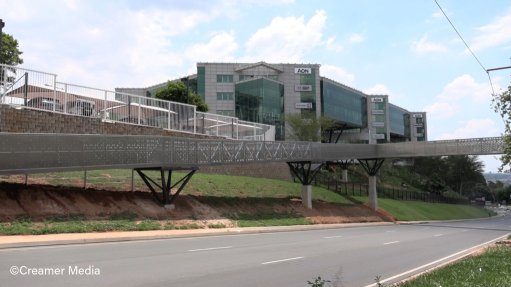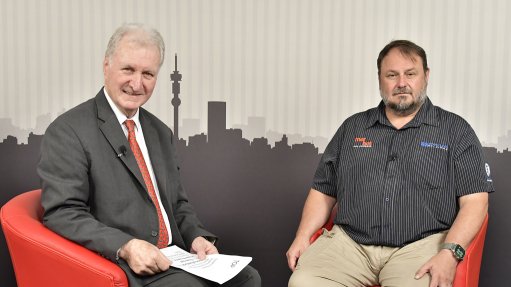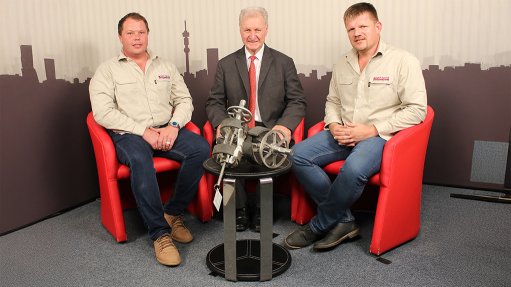EPCs necessary to improve energy efficiency of South Africa’s buildings
The new regulations requiring buildings to display their energy performance certificates (EPCs), which rate their energy-use efficiency, at entrances come into force on December 7.
While undertaking the process to obtain an EPC may seem difficult for building owners and tenants, the first step is to register their buildings and then to take progressive steps to gather the information needed, conduct audits and receive EPCs that display the energy efficiency of the building and its operations.
This was the message from experts and officials during a webinar hosted by consulting and advisory firm EE Business Intelligence on November 17.
Energy and Electricity Deputy Minister Samantha Graham-Maré opened the discussions by emphasising that there would not be any extension beyond the December 7 deadline and that the new regulations were applicable to public departments and organisations, as well as private organisations.
The intentions of the EPC regulations were to improve building performance and reduce operating costs and help all stakeholders to work with real data to make better energy decisions, she said.
“Even some public entities feel overwhelmed and surprised by how quickly the deadline has arrived. The first step is to register [a building], which brings it into the national picture and allows [the South African National Energy Development Institute] (Sanedi) to provide support to help bring it into compliance.”
Once registered, Sanedi provides support to organisations and access to registered professionals to enable organisations to complete the necessary certification processes in a structured way to secure and then display the EPCs for their buildings.
“Government is part of this learning curve and we are not asking anything of the private sector that we are not asking of ourselves,” she added.
Specifically, the EPC regulations provide something South Africa has not had, namely a national baseline of building-energy consumption. With this, the country can build a picture of how buildings are performing.
Similarly, once owners know how their buildings are performing and can identify operational inefficiencies, they can make informed decisions on which upgrades to prioritise, plan retrofits, negotiate with tenants about their energy use and benchmark their buildings against other similar facilities, said Graham-Maré.
Further, because the previously 81 registered EPC professionals were insufficient to support the national process, 232 new EPC graduates have been trained. This forms part of the targeted 500 EPC professionals who will enter the market to support data collection, assessments and the broader certification process, she said.
“EPCs are a tool for better decision-making, as they shine a light on building energy use. They will help organisations to plan and save energy and future-proof these assets. It will also help South Africa take a meaningful step towards a more competitive and sustainable built environment,” Graham-Maré said.
This point was underscored by Department of Energy and Electricity (DEE) energy efficiency and the environment director Xolile Mabusela, who highlighted the significant potential environmental and operational benefits of more energy-efficient buildings.
“Globally, buildings account for 34% of final energy consumption and contribute 37% of related greenhouse-gas emissions. Further, South Africa ranks as one of the 25 highest energy-consuming per capita countries in the world.”
This indicates the scope of potential cost savings and lower environmental impact of having better designed and more efficient buildings, hence the regulations.
Further, in an update on work in progress, the DEE is working on reviewing the mandatory data required for EPCs.
Additionally, it was also working with all relevant stakeholders and organisations to update the building codes to link them to energy-performance requirements, and so that the building codes include performance elements, Mabusela added.
The DEE was also already considering the second generation of the EPC, called EPC Plus, and was considering digitising the process, as well as using Big Data techniques and smart metering to ensure credibility and affordability.
Meanwhile, the DEE was also considering some form of sustainability- or efficiency-linked financing facility to support the projects needed to improve buildings' performance, Mabusela said.
“It is not only about displaying the certificate, but rather about improving the energy performance of the buildings,” he emphasised.
Meanwhile, project development and consulting firm Unlimited Energy Resources director and National Energy Crisis Committee energy efficiency workstream member Dr Theo Covary gave an overview of energy-efficiency regulations and their impact.
In addition to detailing various policy considerations, he gave examples of the impact of such regulations.
Energy-efficiency regulations were introduced in the EU in 2000. Without these regulations, it was estimated that energy consumption of buildings in the EU would have been 25% higher than it was currently, he illustrated.
Additionally, compulsory specifications introduced in South Africa in 2016 to reduce standing losses from hot water geysers have reduced standing losses to about 1.5 kWh a day from about 2.5 kWh a day for geysers made before these specifications.
“The estimations of the benefits of this include savings of up to 8.5 TWh of electricity to 2020, and is the equivalent of switching off an 800 MW electricity generation stack until 2030,” he said.
“This was also a small intervention, as only a few geyser manufacturing companies had to implement interventions, that made a big difference. In the context of reducing energy consumption to meet environmental targets, it is crucial to improve the performance of buildings.”
He added that policy consistency was crucial for driving the process to encourage energy-efficiency performance improvement and that there was also a need to establish funding for the types of projects that would be needed, which also varied by sector.
“Improved energy efficiency would mean more affordable energy for our businesses, which would be more competitive while providing greater value to society,” noted Covary.
Separately, electrical components manufacturer CBI-electric low-voltage engineering executive Dr Andrew Dickson provided a detailed look into what equipment companies can use, how they can measure their energy use and how they can derive commercial value from these efficiency initiatives.
He also answered questions on what accuracy was required to implement energy-efficiency initiatives that would provide business value, and what class of meter was required to achieve this.
Even in complex environments that have many different energy-using processes and equipment, Class 1 and Class 2 meters should provide sufficient resolution of energy consumption to support energy monitoring and management-automation initiatives, he said.
Further, skills development and training nonprofit the Institute of Energy Professionals Africa (IEPA) executive director Yolanda de Lange gave a highly detailed look at the process of obtaining an EPC, the applicable South African National Standards (SANS) in the process and the resources available to organisations and building owners to help them comply.
She also highlighted the information and resources available on the Sanedi website, including a list of registered professionals and evidence of their appointment certificates, as well as a range of information on EPCs.
The specific standards involved in the EPC process were available on the IEPA website, which also had links to the relevant resources, she said.
Sustainable building organisation Green Building Council South Africa CEO Lisa Reynolds, who had provided input into the original energy efficiency in buildings standard SANS 204 in 2010, which became part of the new SANS 1544 standard in 2014, noted that SANS 1544 had been amended to include the new regulations.
The team was also working on redrafting the standard and publishing a new version during the coming year, she added.
“While reducing the energy consumption of each building by 5% to 10% is not a large change, if we can do this en masse, we can remove energy use equivalent to the generation capacity of one power station.
“However, the more than 8 000 buildings registered so far and the 4 500 buildings that have been issued with EPCs are only a [small portion of] what is needed.
“The potential is huge to make a significant difference in energy consumption, but we need to understand how our buildings and processes use energy, which will then enable us to look at energy-efficiency improvement processes to make a difference in energy use in buildings,” she said.
Article Enquiry
Email Article
Save Article
Feedback
To advertise email advertising@creamermedia.co.za or click here
Comments
Press Office
Announcements
What's On
Subscribe to improve your user experience...
Option 1 (equivalent of R125 a month):
Receive a weekly copy of Creamer Media's Engineering News & Mining Weekly magazine
(print copy for those in South Africa and e-magazine for those outside of South Africa)
Receive daily email newsletters
Access to full search results
Access archive of magazine back copies
Access to Projects in Progress
Access to ONE Research Report of your choice in PDF format
Option 2 (equivalent of R375 a month):
All benefits from Option 1
PLUS
Access to Creamer Media's Research Channel Africa for ALL Research Reports, in PDF format, on various industrial and mining sectors
including Electricity; Water; Energy Transition; Hydrogen; Roads, Rail and Ports; Coal; Gold; Platinum; Battery Metals; etc.
Already a subscriber?
Forgotten your password?
Receive weekly copy of Creamer Media's Engineering News & Mining Weekly magazine (print copy for those in South Africa and e-magazine for those outside of South Africa)
➕
Recieve daily email newsletters
➕
Access to full search results
➕
Access archive of magazine back copies
➕
Access to Projects in Progress
➕
Access to ONE Research Report of your choice in PDF format
RESEARCH CHANNEL AFRICA
R4500 (equivalent of R375 a month)
SUBSCRIBEAll benefits from Option 1
➕
Access to Creamer Media's Research Channel Africa for ALL Research Reports on various industrial and mining sectors, in PDF format, including on:
Electricity
➕
Water
➕
Energy Transition
➕
Hydrogen
➕
Roads, Rail and Ports
➕
Coal
➕
Gold
➕
Platinum
➕
Battery Metals
➕
etc.
Receive all benefits from Option 1 or Option 2 delivered to numerous people at your company
➕
Multiple User names and Passwords for simultaneous log-ins
➕
Intranet integration access to all in your organisation





















